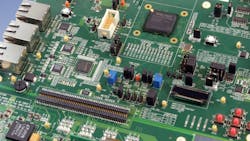Don’t Go it Alone - How Application Engineers Can Serve You
Recent customer research reveals that electrical engineers and designers often rely more on distributors’ application engineers than manufacturers’engineers when looking for part recommendations. This reliance on distributor expertise is being driven by a number of factors, including accessibility, device knowledge and expertise, and unbiased opinions.
For an electrical engineer or designer, finding the right part can be time consuming. Historically this job has been the role of a ‘component engineer’ – a job title that is quickly fading. One of a component engineers’ primary responsibilities is to maintain a library of “approved” parts and to locate alternatives when a device becomes too difficult to procure, too expensive, or obsolete. Simply put, component engineers are tasked with reducing production risk by understanding the options available to the engineer or designer.
One of the most challenging parts of a component engineer’s job is staying up-to-date. Without enough time, regular exposure and training on the latest solutions, devices – even whole classes of devices – can go unnoticed. Because maintaining the library is only one part of a component engineer’s job, education and device knowledge can take a back burner.
Related Articles
• Tiny FPGAs Tackle Tough Tasks
• Check Out Chip Designs On The Cloud
• Object Orientation In Embedded Critical Systems
Application engineers, on the other hand, are tasked with understanding a huge variety of devices like converter ICs, programmable devices such as FPGAs or CPLDs, microcontrollers, and parts like op amps and connectors. Their primary job function is to be the central bank of knowledge on all device options –it’s a full-time job.
Application engineers are also required to pass supplier - provided competency tests so that they remain “certified” application engineers. Continuing education is not only beneficial for the job, it’s mandatory.
Finally, because application engineers work for a third-party organization, they have many devices available and are motivated to help the customer select a solution that suits the customer without pushing a specific brand or price-point solution or device – their only job is to sell the right product for the project based on the designer’s requirements and objectives.
When to tap into an application engineer
Application engineers can assist in identifying the right devices at any stage of a project. But ideally, consulting with an application engineer at the beginning of the project produces the broadest range of possible solutions at the least expensive time to entertain them.
For example, an engineering design house recently had an OEM customer concerned about the end product cost of a suggested design. They felt that the cost was unacceptably high to be viable for production and sales. In this actual situation, an application engineering team conducted a thorough bill of materials (BoM) review and suggested replacing six devices with more cost effective alternatives. The net result was a reduction in product cost of 50 percent, making the design acceptable to the end customer.
Had the design house consulted with the application engineering team at the start of the project, the teams could have potentially saved hours of design time and pushed a product to market even faster.
Another reason to tap into the expertise of a distributor application engineering team is accessibility of information. Web-based organizations believe in the importance of generating technical content to share on the web. This provides a channel for information and device demonstrations to customers that may not have direct access to technical help.
When application engineers create technical content for sharing, it also improves their knowledge-base. Real-life designing ensures application engineers test out the latest devices, use CAD tools to design circuits, build prototypes and troubleshoot their own designs. This hands-on experience makes them better consultants for other designers.
And, problem-solving keeps them on their toes. Application engineers love to find devices or tools that are difficult to use or are missing a design component. It offers an opportunity for them to create a “fix” and post the solutions online (such as www.eewiki.net) for others to use and learn from.
When jumping into any new project, it’s always beneficial to consult a distributor application engineer. No matter what the end result, working with a team of knowledgeable, unbiased experts can provide insight into new options, decrease costs and speed up the design time and time-to-market. Considering all these benefits, there’s nothing to lose!
About the Author
Randall Restle
Director of Applications Engineering
Randall Restle is the Director of Applications Engineering at Digi-Key Corporation. Randall holds a Bachelor’s and Master’s degree in Electrical Engineering. He has worked in product development for over 20 years and in application engineering for over 10 years. He currently manages Digi-Key’s Application Engineering team.
